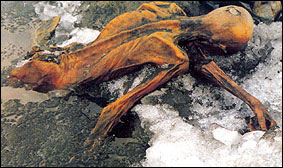SlingerVille Articles
 History of the Military Tattoo
History of the Military Tattoo
Article by: Texasbodyart
June 26, 2013
Two million veterans currently carry with them one of the most identifiable and permanent symbols of military service ever used the tattoo. Although it was once solely the realm of barnacled sailors and outlaw bikers, tattoos are now so mainstream that they have almost become a requirement for celebrities. However, the military tattoo is a special case, with a foot in two worlds. In one sense, military tattoos are much like any other type of tattoo, serving many personal purposes ranging from mementos, milestones, and memorials to risk-taking behavior, sheer body adornment, and even curiosity. In the other sense though, in their long and varied past, these symbols in the skin have also managed to capture not only personal history but military history as well.
Military themes in tattooing are no recent fad. In fact, the world over, tattooing in general may go back as early as the Paleolithic or Stone age. Unfortunately we will never know where or when tattooing actually originated since human skin does not preserve well, except in the most extraordinary of circumstances. Perhaps the most famous of all ancient tattooed people is Otzi, the Ice Man of the Alps who was discovered in 1991. His mummy, created by having been covered with glacial ice shortly after his death, is the oldest known human skin ever discovered 5,300 years old and it is tattooed. Otzi has 59 separate tattoos, consisting of small dark blue dots, plus signs, and short parallel lines. Speculation about the meaning of his tattoos abounds but two of the most interesting interpretations are that his tattoos are therapeutic (located directly over arthritic areas of his body) or that they signaled membership in a group (perhaps an ethnic or tribal group). In this latter interpretation, we begin to see some of the earliest precursors to military tattoos, specifically the projection of group identity. One of the most famous of generals in human history was keen to observe much the same in one of his opponents
In 50 BC, Julius Caesar wrote in his Commentaries on the Gallic Wars that during his campaigns in Britain in 55 and 54 BC he observed that all Britons paint themselves with woad, which turns the skin a bluish-green color; hence their appearance is all the more horrific in battle. While Caesar uses the word paint, later historians speak specifically of tattoos and modern historians believe that the warriors who faced Caesar were in fact tattooed. In these earliest of references to tattoos and military action the emphasis is on intimidation. Caesar reinforces that thought by describing them as horrific, not simply blue. The purpose of the tattoos from the viewpoint of the Britons themselves is not recorded. If their intent was to daunt their foe, then they were successful. There are, however, other psychological and emotional byproducts of being tattooed. The process of receiving one is painful. It is a pigment, inserted through the epidermis (typically with a puncturing tool such as a needle) into the dermis, where it remains permanently beneath that first layer skin. Some blood (though not much) will be spilled and infection is risked. People who endure the process, especially if that process is imbued with some ritualistic and symbolic meaning, as was often the case for early peoples, are transformed. They bear the outward sign of having a shared experience and can forever after be identified with a certain group – be it a group of distinct social status, a certain ethnic unit, or a class of warriors. They essentially manufacture esprit de corps, if only as a side-effect in the attempt to awe their enemies. As widespread as both tattooing and warfare were around the globe, it should come as no surprise that the Britons were not the only, nor even the most well-known, group in history to have used tattooing in this way.
In 1778, Captain James Cook, famed British Naval explorer, landed at Waimea, on Kauai, in the Hawaiian Islands. The ships surgeon noted that the custom of tattooing prevails greatly among these people, but the men have a much larger share of it than the women; many (particularly some of the natives of Mowwhee) have half their body, from head to foot, marked in this manner, which gives them a most striking appearance. Or, as later French explorer Jacques Arago described it on the men from Oahu: they are tattooed only on one side, which produced a very singular effect; they looked just like men half burnt, or daubed with ink, from the top of the head to the sole of the foot. In Hawaii, these early observers noticed that the half-body tattoo seems to have been restricted to warriors. Likewise, in the Marquesas Islands, an identical type of half-body tattoo was used by warriors there as well. For these warriors, the tattoo was a form of disguise where only the tattooed half of the body was shown to an enemy in combat such that the warrior couldn't be recognized by that same enemy in another encounter.
Login to comment
Comments
Posted By: lovelywynter |
6/26/13 6:09 PM
Wow, this is an amazing and great read! I never knew tattoos went this far back! I would have never guessed that tattoos served a purpose to distinguish themselves, make them more fearful to the enemy, or as to be unrecognizable to the enemy!
Login to reply
Posted By: DeepNInks |
6/26/13 10:17 PM
The military has been around a since the olden times and it looks as if decorations (as tattoos) on a warriors body will be around long into the distant future.

